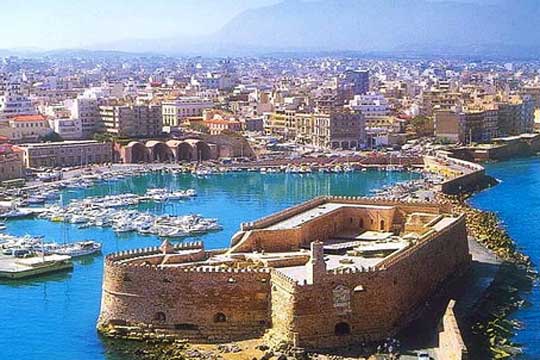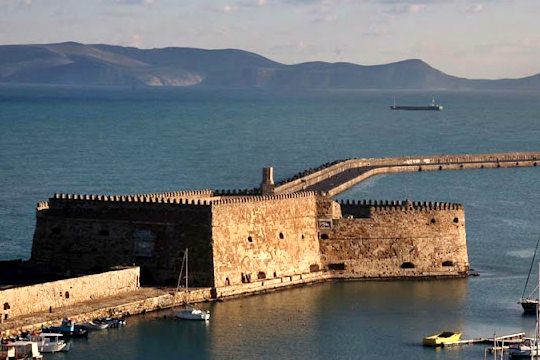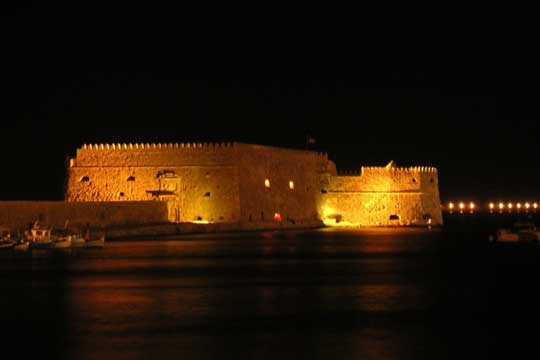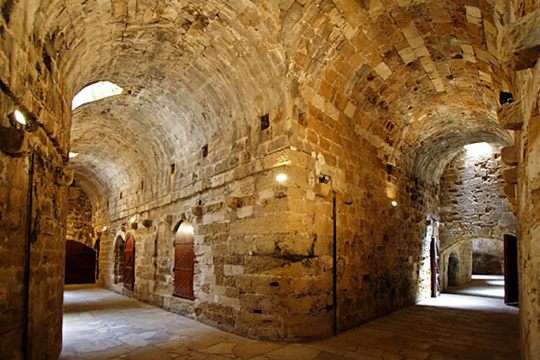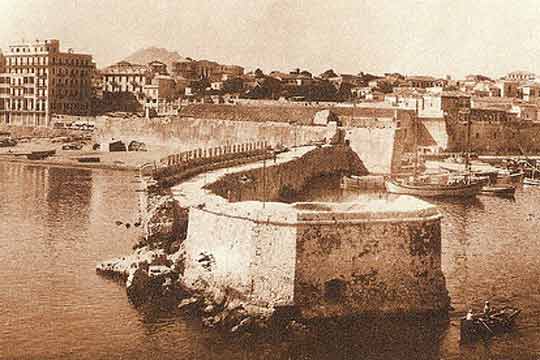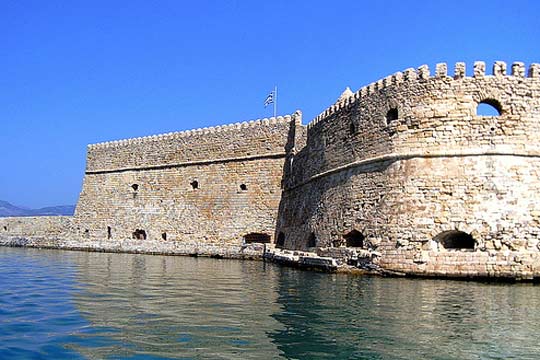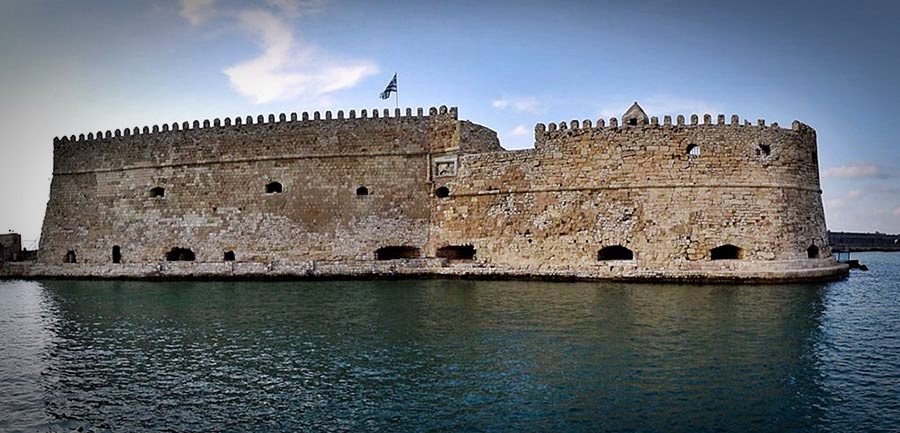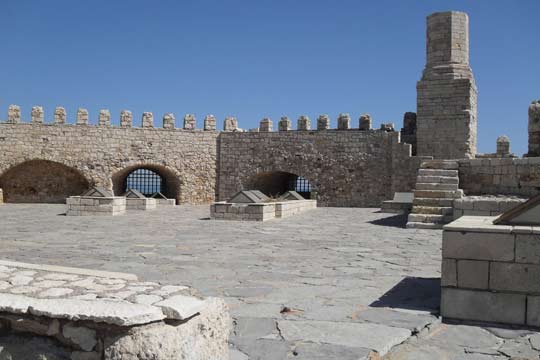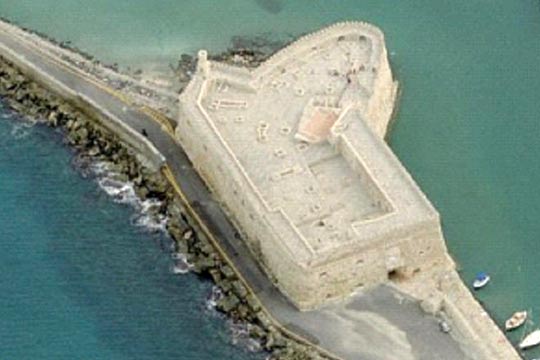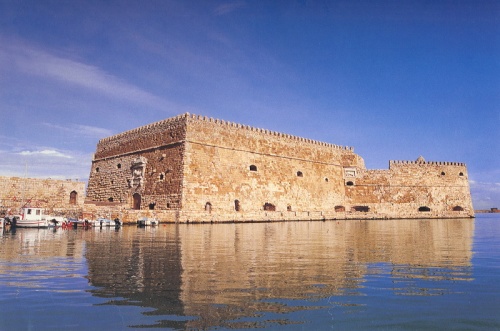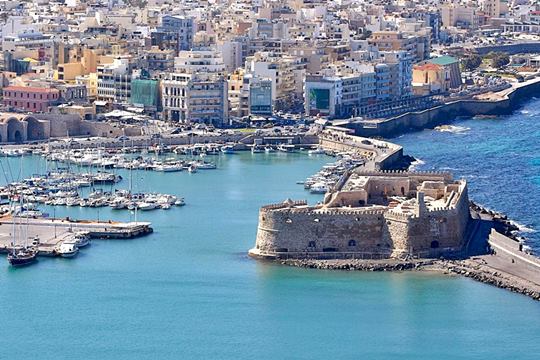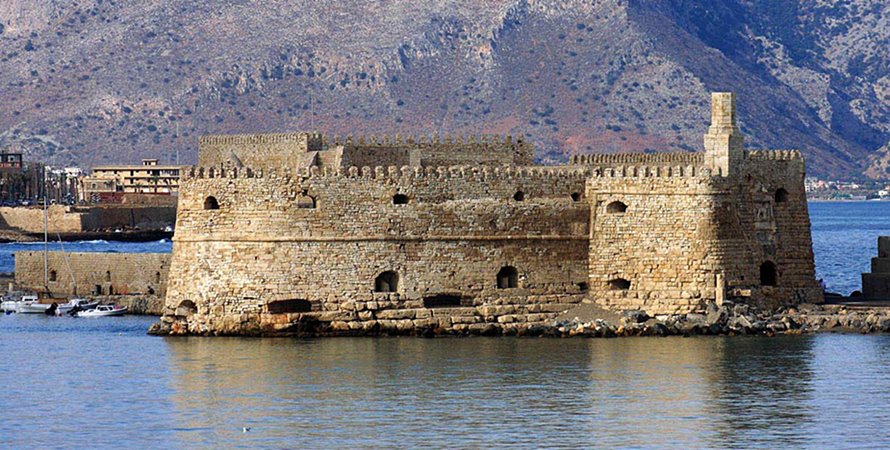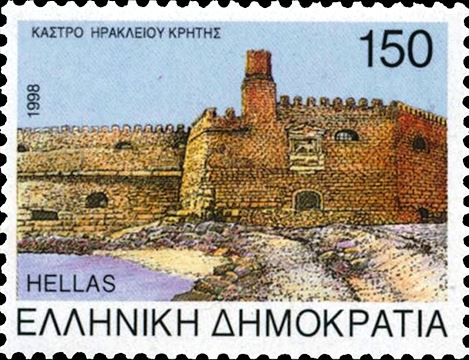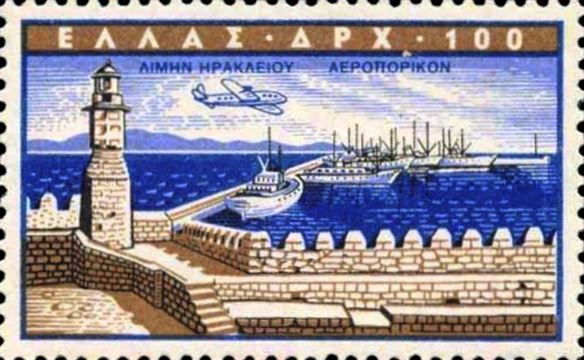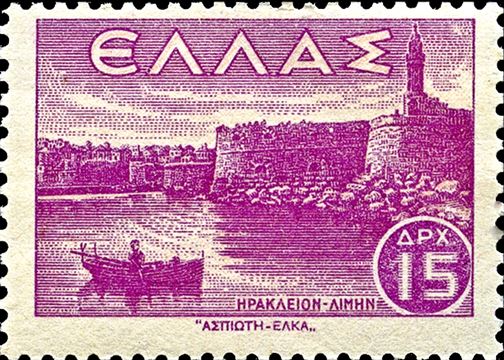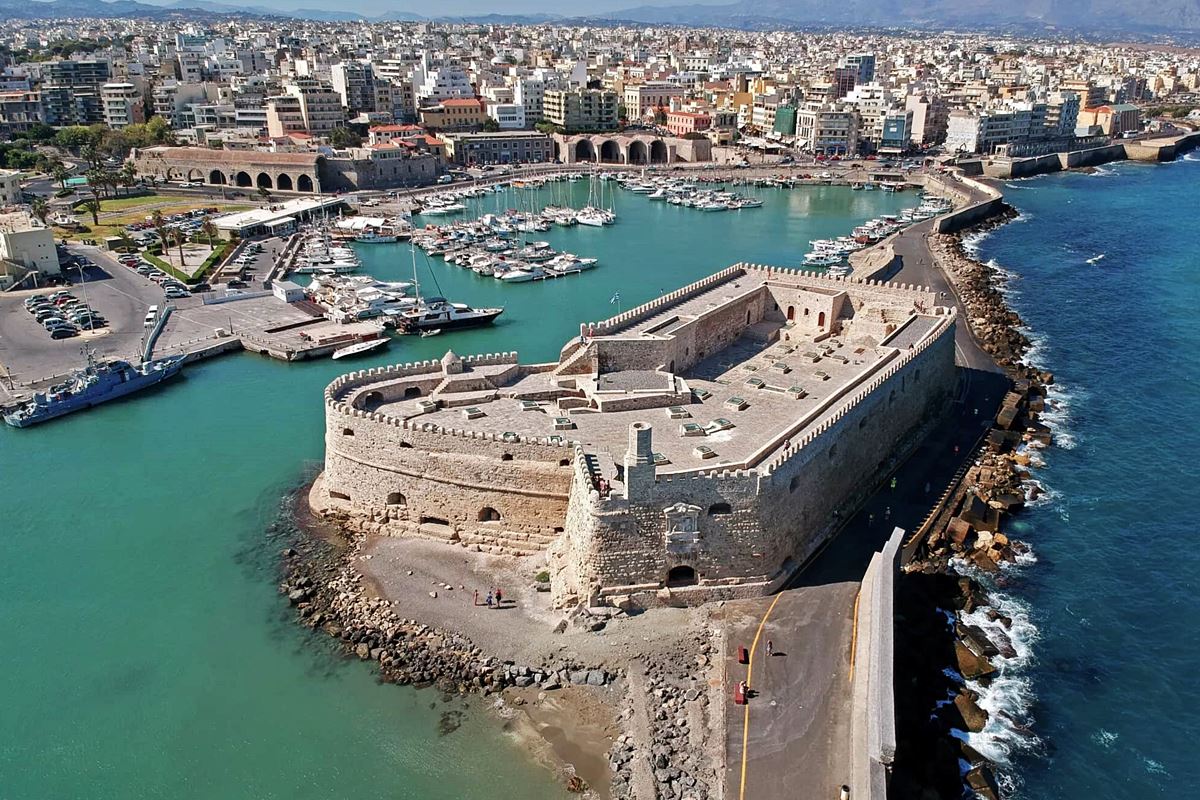Heracleion, Heraklion, Herakleion,Crete
Koules Castle
| Location: |
| Heraclion Port, Crete |
| Region > Prefecture: | 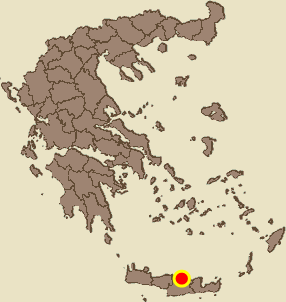 |
| Crete Herakleion | |
| Municipality > Town: | |
| City of Heraklion • Heracleion | |
| Altitude: | |
| Zero Altitude |
| Time of Construction | Origin | |
| 1303 | VENETIAN |
|
| Castle Type | Condition | |
| Coastal Fortress |
Good
|
The Koules Castle dominates the modern port of Heraklion. It is a massive fortress with two floors that used to guard the entry to the port. The Castle was constructed by the Venetians in the early 13th century, and was called Rocca al Mare, but is now known by its Turkish name, Koules.
History
The first fortress was probably built on the site of Koules during the Arab period (9th-10th c.), while there is a reference to a tower called the Castellum Comunis at the harbour entrance in the Second Byzantine period (10th-13th c.) Several sketches by travellers who mapped Heraklion show a tower at the harbour entrance, the earliest being that by Buondelmonti in 1429.
In the mid-14th century, gunpowder made its appearance in Europe and changed dramatically the war technology. Thus the mid-15th century found Heraklion inadequately fortified and the harbour tower, the Byzantine Castellum Comunis, weak and useless for purposes of defence. In 1462 the Venetian Senate approved an ambitious programme of fortification of the city, which was to defend both Heraklion and the burgs (suburbs) outside it, according to the principles of the new bastion front system. As part of this project, the harbour tower was demolished in 1523 and replaced by the Koules fortress still standing today.
The natural rocky outcrop at this point of the harbour was banked up extensively to form the platform on which the fortress was to be built, covering an area of 3,600 m2. The work was carried out in an interesting way: old ships were filled with stone from the island of Dia and sunk off the north side of the mole, forming a breakwater and increasing the space available.
Work on Koules continued until 1540. In 1669 the Turks occupied the island. They did not make any serious modifications to the castle although they did maintenance works several times.
Structure, Fortification & Buildings
The outer walls are almost 9 metres thick, while the inner walls are up to 3 metres thick at some points. The sea damaged the foundations from early on, and repairs were carried out at intervals. The fortress also had many weak points, due to the fact that it was built in a transitional period when fortification architecture was still at an experimental stage.
Structurally speaking, Koules is formed of two sections:
the south-western, rectangular section, slightly higher
the north-eastern, semi-elliptical section, slightly lower.
There were three entrances to the fortress, on the west, north and southwest sides; the main gate was on the west. Various plaques, inscriptions and coats of arms carved in relief were set into the outer walls. The best are the three marble reliefs depicting the winged lion of St Mark, the symbol of the Most Serene Republic of Venice, one over each entrance. Two of them are still preserved today, clearly weathered by constant exposure to the sea air.
The fortress is a two-storey building with 26 rooms. There were originally five casemates (special areas for cannon) on the ground floor. It soon became apparent, however, that the use of guns indoors was problematic, due to the limited field of vision through the narrow embrasures, and the choking smoke produced on firing. Thus the cannon were moved to open platforms on the upper storey and the casemates were abandoned.
The ground floor also housed a prison and various storage areas for food and munitions.
On the north side of the upper storey, which formed a spacious square, was the lighthouse tower. There were also quarters for the soldiers, the officers and the governor.
The fortress of Koules did not play a major role during the Turkish siege of Chandax (1646-1669), as the Turkish batteries, strategically placed, were able to neutralise its firepower fairly early on and the Turks gained control of the harbour entrance.
No major modifications were carried out to Koules during the period of Turkish rule, apart from the addition of stone battlements with fire steps for their musketeers, and gun embrasures. The Turks built a smaller fortress, known as Little Koules, opposite Koules on the landward side. Unfortunately this monument was demolished along with part of the Venetian shipyards in 1936, to make room for the city development.
| First entry in Kastrologos: | July 2012 |
Sources
- Blog Candia, 'http://candia.wordpress.com/culture/history-of-crete/koules/
- Website explorecrete.com - The Venetian Koules in Heraklion
|
|
| Access |
|---|
| Approach to the monument: |
| Easy access from the port of Heraclion. |
| Entrance: |
| Ticket entrance. Limited hours. |



